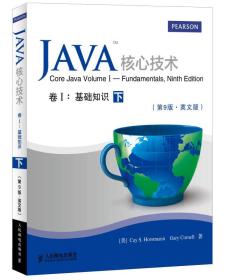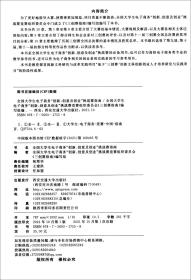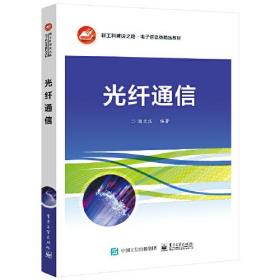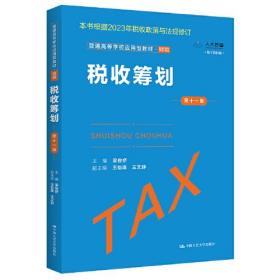
Java核心技术 卷I:基础知识(第9版 英文版)
正版二手书,图片套装的图书是其中一本,购买前请联系客服
¥ 48.05 4.4折 ¥ 109 八五品
库存2件
山东济南
认证卖家担保交易快速发货售后保障
作者[美]凯(Cay S. Horstmann)、加里·康奈尔(Gary Cornell) 著
出版社人民邮电出版社
出版时间2015-04
版次02
装帧平装
货号9787115380371
上书时间2024-06-19
- 在售商品 暂无
- 平均发货时间 8小时
- 好评率 暂无
- 最新上架
商品详情
- 品相描述:八五品
图书标准信息
- 作者 [美]凯(Cay S. Horstmann)、加里·康奈尔(Gary Cornell) 著
- 出版社 人民邮电出版社
- 出版时间 2015-04
- 版次 02
- ISBN 9787115380371
- 定价 109.00元
- 装帧 平装
- 开本 16开
- 纸张 胶版纸
- 页数 974页
- 字数 1197千字
- 正文语种 英语
- 【内容简介】
-
《Java核心技术卷I:基础知识(第9版英文版)》是经典的Java图书的全新版。这一版针对JavaSE7平台进行了全面更新。书中囊括了Java的全部基础知识,提供了大量完整且具有实际意义的应用示例,详细介绍了Java语言基础、面向对象编程、反射与代理、接口与内部类、事件监听器模型、使用SwingUI工具进行图形用户界面程序设计、打包应用程序、异常处理、登录与调试、泛型编程、集合框架、多线程等内容。
《Java核心技术卷I:基础知识(第9版英文版)》适合想将Java应用于实际项目的软件开发人员、高等院校教师和学生参考阅读。 - 【作者简介】
- CayS.Horstmann是ScalafortheImpatient的作者,还与人合著了CoreJavaServerFaces。他是圣何塞州立大学计算机科学专业的教授,还是一名JavaChampion,并经常在很多开发者大会上演讲。 GaryCornell在编程方面拥有20多年的写作和教育经验。他是Apress的创始人之一,编写了很多与开发相关的畅销书,是Jolt大奖的获奖者之一,还荣获过VisualBasicMagazine的读者选择奖。
- 【目录】
-
Chapter 1: An Introduction to Java 1
1.1 Java As a Programming Platform . 1
1.2 The Java “White Paper” Buzzwords 2
1.2.1 Simple 3
1.2.2 Object-Oriented 4
1.2.3 Network-Savvy 4
1.2.4 Robust 5
1.2.5 Secure 5
1.2.6 Architecture-Neutral . 6
1.2.7 Portable . 7
1.2.8 Interpreted 7
1.2.9 High-Performance . 8
1.2.10 Multithreaded 8
1.2.11 Dynamic 8
1.3 Java Applets and the Internet 9
1.4 A Short History of Java . 10
1.5 Common Misconceptions about Java . 13
Chapter 2: The Java Programming Environment 17
2.1 Installing the Java Development Kit 18
2.1.1 Downloading the JDK . 18
2.1.2 Setting the Executable Path 20
2.1.3 Installing the Library Source and Documentation . 22
2.1.4 Installing the Core Java Program Examples 23
2.1.5 Navigating the Java Directories . 24
2.2 Choosing a Development Environment 24
2.3 Using the Command-Line Tools . 25
2.3.1 Troubleshooting Hints 27
2.4 Using an Integrated Development Environment . 28
2.4.1 Locating Compilation Errors . 32
2.5 Running a Graphical Application . 33
2.6 Building and Running Applets . 36
Chapter 3: Fundamental Programming Structures in Java 41
3.1 A Simple Java Program 42
3.2 Comments 45
3.3 Data Types 46
3.3.1 Integer Types 47
3.3.2 Floating-Point Types . 48
3.3.3 The char Type . 49
3.3.4 The boolean Type . 51
3.4 Variables . 52
3.4.1 Initializing Variables . 53
3.4.2 Constants 54
3.5 Operators 55
3.5.1 Increment and Decrement Operators . 56
3.5.2 Relational and boolean Operators . 57
3.5.3 Bitwise Operators 58
3.5.4 Mathematical Functions and Constants . 59
3.5.5 Conversions between Numeric Types 60
3.5.6 Casts . 61
3.5.7 Parentheses and Operator Hierarchy . 62
3.5.8 Enumerated Types . 63
3.6 Strings . 64
3.6.1 Substrings . 64
3.6.2 Concatenation 64
3.6.3 Strings Are Immutable 65
3.6.4 Testing Strings for Equality 67
3.6.5 Empty and Null Strings 68
3.6.5 Code Points and Code Units 68
3.6.6 The String API 69
3.6.7 Readingthe Online API Documentation . 72
3.6.8 Building Strings . 74
3.7 Input and Output 76
3.7.1 Reading Input . 76
3.7.2 Formatting Output 79
3.7.3 File Input and Output . 84
3.8 Control Flow 86
3.8.1 Block Scope . 86
3.8.2 Conditional Statements . 87
3.8.3 Loops . 91
3.8.4 Determinate Loops 95
3.8.5 Multiple Selections—The switch Statement 99
3.8.6 Statements That Break Control Flow 102
3.9 Big Numbers 105
3.10 Arrays 107
3.10.1 The “for each” Loop 109
3.10.2 Array Initializers and Anonymous Arrays 110
3.10.3 Array Copying . 111
3.10.4 Command-Line Parameters . 112
3.10.5 Array Sorting 113
3.10.6 Multidimensional Arrays . 116
3.10.7 Ragged Arrays . 120
Chapter 4: Objects and Classes 125
4.1 Introduction to Object-Oriented Programming 126
4.1.1 Classes . 127
4.1.2 Objects . 128
4.1.3 Identifying Classes 129
4.1.4 Relationships between Classes 129
4.2 Using Predefined Classes . 132
4.2.1 Objects and Object Variables . 132
4.2.2 The GregorianCalendar Class of the Java Library . 136
4.2.3 Mutator and Accessor Methods 138
4.3 Defining Your Own Classes . 145
4.3.1 An Employee Class 145
4.3.2 Use of Multiple Source Files 148
4.3.3 Dissecting the Employee Class . 149
4.3.4 First Steps with Constructors . 150
4.3.5 Implicit and Explicit Parameters . 152
4.3.6 Benefits of Encapsulation . 153
4.3.7 Class-Based Access Privileges . 156
4.3.8 Private Methods . 156
4.3.9 Final Instance Fields 157
4.4 Static Fields and Methods 157
4.4.1 Static Fields . 157
4.4.2 Static Constants 158
4.4.3 Static Methods 159
4.4.4 Factory Methods 161
4.4.5 The main Method 161
4.5 Method Parameters . 164
4.6 Object Construction 171
4.6.1 Overloading 171
4.6.2 Default Field Initialization . 172
4.6.3 The Constructor with No Arguments 173
4.6.4 Explicit Field Initialization . 174
4.6.5 Parameter Names 175
4.6.6 Calling Another Constructor . 176
4.6.7 Initialization Blocks . 176
4.6.8 Object Destruction and the finalizeMe
点击展开
点击收起
— 没有更多了 —












以下为对购买帮助不大的评价